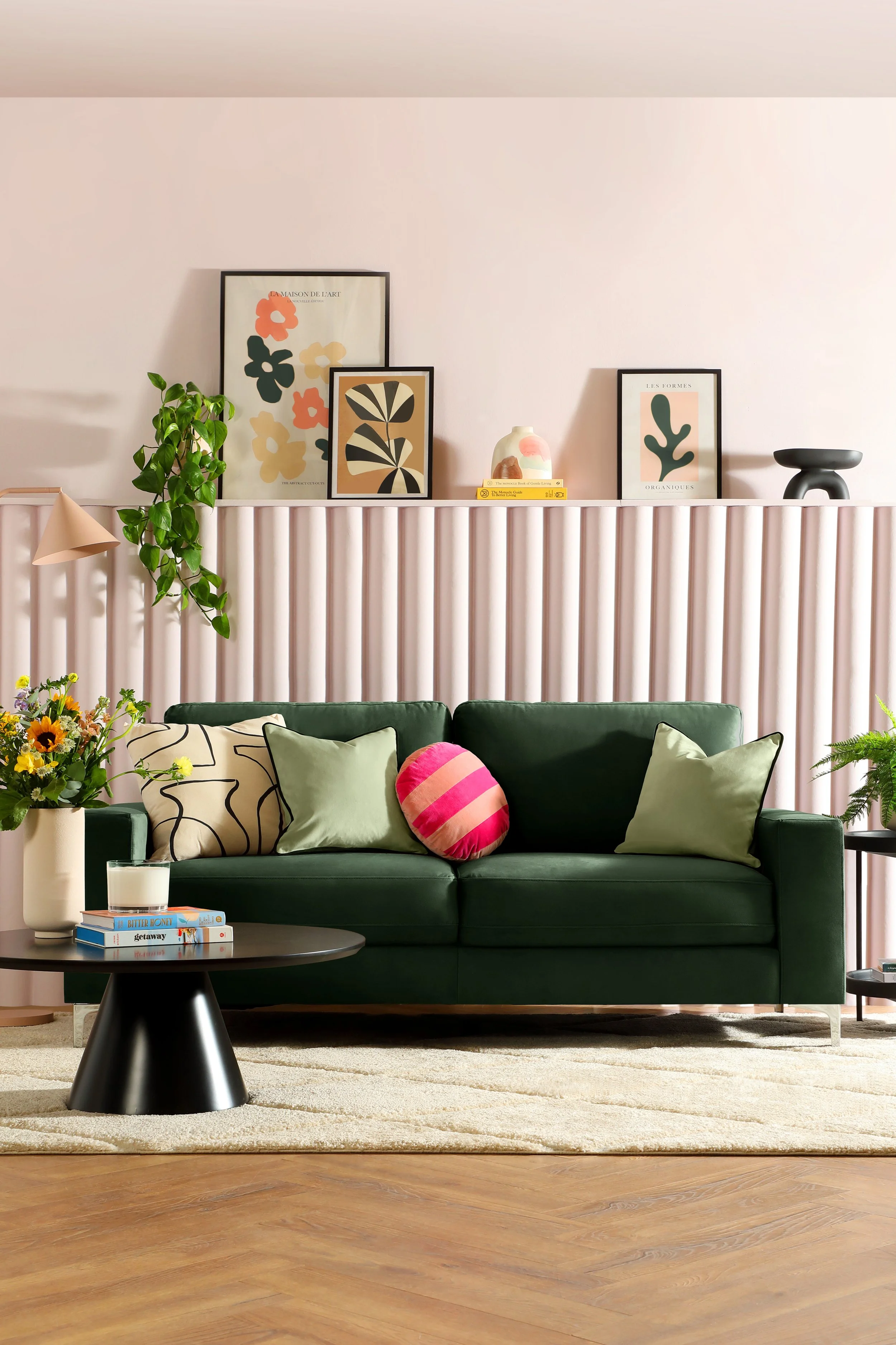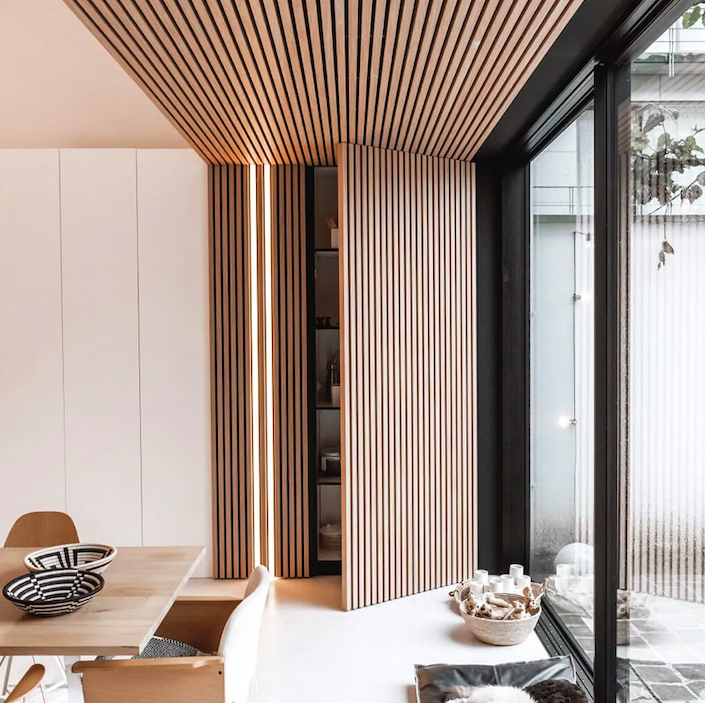My top eight tips on how to pick the right interior wall panelling
Before I get into all the detail, let me give you a quick introduction to interior wall panelling.
Firstly, where did wall panelling originate from?
Panelling was developed in antiquity to make rooms in stone buildings more comfortable both by insulating the room from the stone, and reflecting radiant heat from wood fires, making heat more evenly distributed in the room. In more modern buildings, such panelling is often installed for decorative purposes.
Secondly, why should I consider interior wall panelling?
Panelling is having a moment in the interiors world and I’m fully on board with it. I incorporate panelling of all shapes and sizes into my schemes, to add texture, depth and interest to a space. Whether you're aiming for a classic, rustic, or contemporary look, it will reflect and enhance the character of a property. What’s more, panelling provides protection for busy areas of the home, such as the hallway and stairs, where a wipe-clean paint finish ensures it’s easy to maintain. It can also fix walls that are less than perfect, giving straight lines and a smart framework.
Panelling can also help make a room look bigger, If the wall panels are horizontal, they can elongate a room. Equally, if they are applied vertically, they can create the illusion of an high ceiling.
Panelling is relatively labour intensive but it is very doable without needing a professional. It’s an inexpensive way to create an expensive and elegant look. MDF wood is the cheapest way to do it and will cost you around £20 per square metre. Arm yourself with a few YouTube videos and you’ve got yourself a weekend’s DIY project.
There’s lots to bear in mind if you choose to add panelling to your home, so here are my top eight tips on how to get it right.
Fluted panelling image from Furniture and Choice
Let your house dictate your panelling style
Pick a style which is in keeping with the period of your house. There are five key panelling styles which I have detailed below:
Choose traditional raised panel moulding or wainscoting in a property which is classed as ‘period’ - Victorian, Edwardian or Georgian in particular. It’s the most ornate and classical looking style of panelling and is made up of decorative mouldings applied in square or rectangle frames on the wall.
Tongue and groove, or the very similar shiplap panelling is a more rustic style and works perfectly in a rustic country cottage. It is made of strips of interlocking wood panels which run vertically, or occasionally horizontally across a wall, either full, half or ¾ height.
The cleaner, shaker panelling, or batten and board is very popular currently as it works in any modern style home. It involves using wooden batons to create square or sometimes rectangular shapes across a full wall, or sometimes to half height or ¾ height.
Vertical slatted or fluted panelling emanates a much more uber contemporary, often industrial look and is becoming more and more popular. It’s a great way to create an illusion of height in more modern homes with low ceilings. It originated from acoustic panelling but is now being used for purely aesthetic purposes in interior design. It is made from slats of plywood which are often left untreated and look fabulous as they are, or are stained depending on the depth of colour required.
Geometric, or Geo Wood panelling designs are a fantastic way to add texture to your blank walls, whilst bringing a stylish, unusual contemporary vibe. I love the work of CK Custom Wall Design, an incredible wall art company who create all sorts of unexpected, funky designs, from geometric, to circles, to any pattern or shape you like, all bespoke and one of a kind.
An unusual, contemporary Geo Wood panelling design by CK Custom Wall Design
2. Use panelling to break up a space
Panelling is a clever and creative way to zone a large, open plan space, and a great way to break up a large expanse of high ceilinged walls. For example, you might choose to panel and paint the walls which mark out the lounge area of a kitchen/ dining/ living space, making it feel cosier than the rest of the room. Or some slatted panels on the wall behind a desk in an open plan living space would zone off one area from another.
3. Frame wall art or wallpaper with your panels
Square and rectangular shapes made from simple wooden mouldings are a great way to frame a piece of art, a mirror or wall lights. Either keep it super clean and paint the moulding the same colour as the walls, or you may choose to paint the moulding a different shade to make the frames stand out. If you fancy introducing some pattern to a space but don’t want to cover a whole wall with bold wallpaper, containing it inside the frames is a more subtle way of introducing some pattern and interest.
4. Make a statement in a bathroom
Panelling is a great alternative to tiles. If you choose to go half height, it comes in handy when topped with a narrow shelf for your bottles and candles next to the bath. Just ensure you use moisture resistant MDF sheeting to avoid any warping in a steamy bathroom. Naturewall do these fabulous oak effect laminate panels which are super realistic - I am a huge fan and used them in a lovely bathroom recently.
5. Create a two tone wall
Half height panelling is a great option for a more subtle look. It creates impact without being too overwhelming. It is also a good way to split two paint shades in a room. A darker shade tends to work best on the lower panelled section of your walls, with a lighter shade above. This particularly helps in a rooms with low ceilings as the eye will be drawn towards the darker, bolder shade of paint, whilst the low ceiling won’t be made obvious.
6. Panel away your storage
Panelling is a clever, streamlined way to create hidden storage and disguise doors or TVs. How fabulous is this slatted wall below? The door is cleverly hidden as it forms part of the wall.
Hidden door image from Designer Walls
7. Don’t forget about the ceiling.
Bring your panelling up onto the ceiling for added drama and to draw the eye upwards. This is a great idea in a bedroom, if you panel the section of the ceiling directly above the bed to create a ‘canopy’ effect.
Ceiling panelling design from CK Custom Wall Design
8. Create a focal point
Panel a chimney breast to draw attention to the focal point in a sitting room. Or install it behind a bed for an elegant way to create a dramatic oversized headboard.





